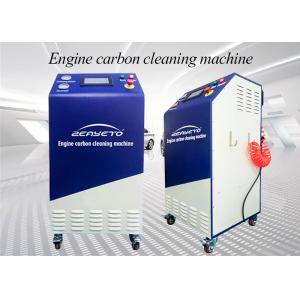
Add to Cart
Cost Saving HHO Engine Cleaning Machine Top Engine Cleaner For Small Trucks
Anti-pollution standards for diesel engines:
For cars running on diesel, opacity levels of exhaust fumes should be less than:
3 M-1 for turbo engines.
2.5 M-1 for cars built until mid-2008 without turbo engines.
1.5 M-1 for cars built after mid-2008 without turbo engines.
Gas vehicles manufactured prior to 1972, and for diesel vehicles manufactured prior to 1980 -- that is to say, before pollution standards went into effect -- are exempt from emissions control.
Finally, although engine noise is measured, it will not lead to a re-test if deemed excessive.
The reason for cleaning engine carbon:
Parameters:
Product description:
HO-1500 engine carbon cleaning machine is used for removing the carbon deposit in the car engine with hho generators. It will produce two gases---Hydrogen and Oxygen, and then sent into the engine system burning with the carbon completely in a high temperature. The impurities will be melted and become CO2 and some steams out of the exhaust pipe.
Using steps:
1. Continuously decompose hydrogen and oxygen from water by electrolysis.
2. Hydrogen is a kind of fuel and Oxygen plays a role as combustion aid. In the engine running conditions, hydrogen and oxygen fuel coming into the engine room, with air and other vehicle fuel (oil or gas) burning together. Hydrogen and oxygen’s combustion will produce high temperature steam. Hot water vapor is known to soften hard carbon deposits, softening a thin layer of carbon each cycle. The softening of carbon deposition occurs at this stage of the engine's work. (Carbon deposition softening process)
3. At the same time, hydrogen is also a kind of catalyst. Hydrogen with air coming into the engine. In the process of compressing, due to the hydrogen molecular is very light, it spread everywhere in combustion chamber. At the same time, hydrogen molecule is very small, which is able to move quickly to the inside of carbon deposition to soften carbon deposition. With hydrogenation, non-combustible carbon changes into a combustible carbon deposition. (Carbon deposition modification process)
4. After the carbon deposition modified in the last cycle, it is burned off in the next combustion process, and carbon dioxide is produced and discharged out of the car.
